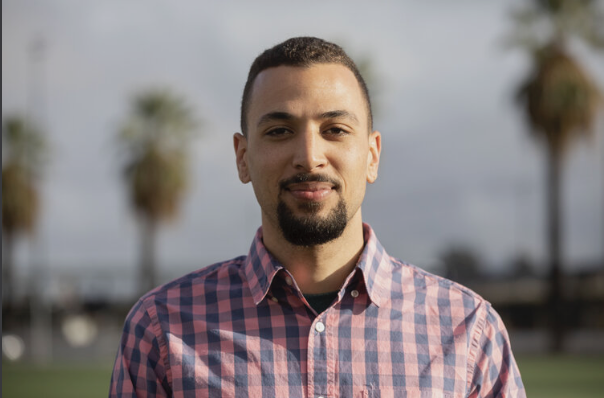The real ‘renaissance’

Ongoing pollution and health disparities has San Bernardino thinking of a future beyond warehouses
Frontline Observer Staff Report
The San Bernardino City Council later this evening will consider a warehouse moratorium that intends to put a temporary pause on the construction of new warehouses within the city’s boundaries.
The initiative, being championed by Councilman Ben Reynoso, has the support of several environmental, environmental justice, and community groups who all agree that large companies and developers should not be allowed to build new tilt-up structures until city leaders and residents can work together to create an economic and cultural “renaissance.”
“As soon as we get a pause, the conversation will shift on how we can create high road employment for residents here and in nearby communities,” said Reynoso, who represents the city’s Fifth Ward. “We’ve had enough warehouses. Let’s work on what we have now and look into the factors that are contributing to our economic disparities, pollution levels, and health impacts that the goods movement is driving in our neighborhoods.”
The freshmen councilmember’s proposal would be the second of its kind in the Inland Empire in the last year, as Riverside placed a temporary pause on warehouse construction in March 2020. The calls for moratoriums come from the concern related to the source of pollution these structures attract—diesel trucks. Diesel-spewing pollution is responsible for NOx and particulate matter pollution that causes damaging respiratory illnesses and cancer near communities located near ports, freight corridors, and warehouses. San Bernardino is an epicenter for such impacts, argues Reynoso, and says a moratorium will help bring equity into the conversation.
“If you looked at it on paper and you didn’t live here, perhaps it seems like economic suicide,” said Reynoso. “But for the people living here and who grew up in the City of San Bernardino, it’s always been about carrying a narrative about ‘being broke’ and doing whatever we can to not be broke. Sure, corruption has been a thing here too, but the conversation has really been about how economic development has targeted one sector – logistics.
Doing business in the warehouse and logistics industry has netted record profits in a time when other sectors are struggling to stay afloat. According to real estate company CBRE, the Inland Empire had 52 million square feet of warehouse transactions – the most ever recorded. Meanwhile, the San Bernardino International Airport reported that it made $2.7 billion in economic output from operations in 2019, and its new air cargo tenant Amazon made $386 billion in 2020.
“Our airport is finally delivering on its earlier promises with thousands of new jobs coming to the city – including an exciting new project from the San Manuel Band of Mission Indians,” said Valdivia in an opinion-editorial published by the San Bernardino Sun on April 4.
Despite those figures, many residents were barely getting by before the pandemic and are now facing the triple impact of truck pollution, low wages from warehouse work, and covid-19, says Sierra Club My Generation Campaign Organizer and Highland resident Angie Balderas.
“It’s our people, mainly Black, Brown, and Asian folks paying the price with their health, mental health and their lives,” said Balderas.
Ada Trujillo, a mother of three children, is raising her family near ‘diesel death zones’ that serve as thoroughfares for the likes of Amazon, Burlington Northern Santa Fe, and other major goods movement players. She agrees that while companies like Amazon have become rich, her family has been left to struggle through a “slow and violent” pandemic.
“They continue to build, while we’re on standstill, and while we continue to struggle to live and even breathe,” said Trujillo during a phone interview. “And when things return back to normal, we’ll see the same things: more industry, more warehouses, more pollution, and more health impacts in our communities.”
Despite what leaders like Mayor Valdivia say, Trujillo commented, they have no respect for communities if they don’t consider a moratorium that will slow down the industry’s massive development of warehouses.
“They get stuck on this idea of bringing jobs to our communities, but they’re really giving free passes to the biggest companies, while local and small businesses close down forever. They’re not thinking of our quality of life when they build. They’re only thinking about their own well being.”
Martha Romero, an organizer with the San Bernardino Airport Communities coalition, believes a warehouse moratorium will give city leaders a clearer understanding of what is affecting the quality of life of residents and how they can help turn things around.
“We’ve been willing to communicate and have open conversations about this issue and how to bring solutions that work for both,” said Romero. “It’s clear that the industry’s carbon footprint is making our air quality and lungs suffer. Why not set restricted truck routes, bring air filters, and electric trucks for people that for a long time have received nothing in return for this development.”
Creating a future where children breathe clean air and workers have more protections is what Reynoso is aiming to do long term.
“This is about protecting the community to me. Cancer should not be normal. Respiratory issues are not normal. We need to get a handle on this, and this is the first step.”
